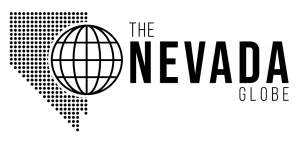
Night operations on the Caldor Fire in September, 2021. An engine crew member monitored the control line of a back burn conducted by Deschutes Engine 636. Photo by Acacia England, U.S. Forest Service (Photo:National Interagency Fire Center)
Burn Back Better? USFS Chief’s Letter of Intent Provokes Revolt in the Firefighting Community
USFS plans to burn another 60 million acres of public and private forests and rangelands
By Dana Tibbitts, May 28, 2024 8:52 pm
“The Forest Service has no authority to let fires burn millions of acres—misappropriating tax dollars and recklessly destroying our natural resources…It’s an inverse condemnation of private property and wanton destruction of public resources, pure and simple,” Chief forester Frank Carroll
The United States Forest Service (USFS) just gave firefighters license to burn millions of acres of forest and rangelands with zero commitment to putting the fires out. Randy Moore, Chief of the nation’s largest fire agency, announced he will continue the fire policy that has incinerated nearly 30 million acres of public and private lands over the last five years.

Moore’s recent Letter of Intent (LOI) (see below) to his troops predicts “a very active fire season.” The letter blurs fire policy, jurisdictional boundaries, and any strategic framework for fighting fire by lighting more fire. Indeed, the Chief’s “Burn Back Better” letter has caused a firestorm among firefighters and Forest Service veterans nationwide.
“We ain’t seen nothing yet,” said one fire veteran in response to the letter. “The USFS is doubling down. The Chief’s claim of a ‘historic achievement of 4.3 million acres of restoration’ prioritizes rampant ‘Wildfire Use’ over a strong ‘Initial Attack’ to put the fire out from the get-go. It’s also a misappropriation of congressionally appropriated funds allocated to the agency for emergency fire suppression.”
“Last year was a reprieve,” National Wildfire Institute (NWI) sources say. “Forest maintenance is down, so acres burned will likely increase. It’s only May 22, and about two million acres have already burned. Look for about eight million acres to burn in the 2024 fire season as a strong ‘Initial Attack’ policy gives way to a ‘managed’ or ‘beneficial’ fire. If history is a guide, the West will bear the brunt.”
Cynically, the USFS’s new “full fire suppression” definition includes letting fires burn for reasons including “restoration” strategies that rely on so-called “managed” or “beneficial” wildfires that burn much longer and hotter than necessary, and at great expense to American homeowners and their insurers.
The colossal fiascoes of the Caldor, Tamarack, and Dixie fires of 2021 are case in point. These fires were allowed to run for months, consuming almost 1.3 million acres of Sierra Nevada forest. The costs of Caldor Fire damages alone ran in the billions of dollars, not including trees and wildlife lost, or damages to 1,200 residents displaced from their homes.
Burning an average of more than six million acres a year over the last decade is now a standing order for the USFS, not only in California but across the nation. The wholesale use of “managed” or “prescribed” fire under the guise of firefighter safety, forest health, and resilience and restoration, is scarring landscapes, devastating forests, and leaving vast lifeless ecosystems with few signs of recovery.
The Forest Service is just warming up. With 2022 federal fire plans calling for another 60 million acres to burn over ten years, operation Burn Back Better—AKA Operation Scorched Earth—is well underway.
Tahoe-Douglas Fire Chief and head of the Northern Nevada Fire Chiefs Association, Scott Lindgren said, “The latest forecast and guidance from the Chief is so unhinged from firefighting realities on the ground as to defy rational analysis or practical guidance.”

USFS Regional Foresters are deploying a new policy, calling for all fires in the Tahoe Basin to be risk-assessed and monitored by USFS Regional Foresters, who alone would determine the appropriate response to new fire ignitions.
Lindgren rejects the idea. “It’s a non-starter. If a fire in the Basin threatens my jurisdiction or community, we’re not going to wait around. We’ll hit every fire hard and direct with everything we’ve got. Managed fire is not an option. Look at Caldor and Tamarack. We need to put fires out immediately.”
“The USFS decision to allow these fires to burn is criminal,” Lindgren added. “I’m very disturbed that, by allowing these fires to burn like they did in the Tamarack Fire, they get to count those acres as ‘treated.’ These are not treated acres—they are destroyed acres!”
Rapidly suppressing wildfires is not on the lexicon of USFS response options, a problem that cost the town of Grizzly Flats dearly in the throes of the early Caldor fire. Fire bosses called off six fire engines for the night in deference to “firefighter safety.”
Wildfire Pro’s chief forester Frank Carroll says USFS fire commanders and administrators are using firefighter safety as a false flag to justify wildfire use, even at the expense of civilian lives and devastated communities.
“Firefighter safety is an excuse that is neither safe nor supportable—a feature of the persistent failure to build informed consent and to analyze environmental impacts before letting wildfires burn and then expand them on purpose,” Carroll said. “They’re unilaterally implementing giant prescribed wildfires—consequences be damned. Sixteen civilians died in a 2020 fire that raced to 194,000 acres one afternoon following days of “widespread firing operations.”
Indeed, Chief Moore’s letter prioritizes workforce safety ahead of strong suppression and public safety. “Safety is one of our core values” along with “continued emphasis on employee wellbeing,” he writes. However, putting “USFS people first and managing employee mental and physical fatigue” won’t put out wildfires or protect forests, rangelands and personal property.
Many in the fire community are alarmed by the absence of direction from the USFS Chief to actually put out wildfires. Despite strong recommendations from fire insiders like National Wildfire Institute to bolster the science, sustainability and success of USFS fire policy none of their recommendations was adopted in the final LOI.
“What happened to, First put out the fire!” asked one dismayed former USFS executive, Michael Rains. “How hard would it be to include this in the LOI—Strive to put out every unplanned wildfire within 24 hours of detection. What an opportunity lost!”
“The Chief’s policy on allowing ‘managed wildfires’ is outrageous, ill-conceived, and probably illegal,” Carroll said. “The policy denies due process to private property owners with no say in decisions that inevitably burn their private property. The Forest Service has no authority to let fires burn millions of acres—misappropriating tax dollars and recklessly destroying our natural resources.”

When Fire Chief Lindgren testified before the House Committee on Natural Resources in 2022, he raised concerns about Chief Moore’s LOI continuing to advocate the catastrophic burn policy, even after the Caldor and Tamarack fire debacles.
“Many local fire chiefs were very upset,” Lindgren testified. “So, we wrote our own letter of intent, which we believe reflects the public’s expectations and demands of us.” Over 30 chiefs in California and Nevada sign the letter annually.
“We will aggressively attack all fires within or threatening our jurisdictions. We will hit them as fast and hard as possible when they are small. In these unprecedented conditions, we can’t afford the risk to our public, our communities, the environment, the wildlife, critical infrastructure, or our firefighters by letting these fires grow out of control. We will use every available resource and tool to keep this from happening…We will find a way to get ahead of it and stop it at all costs,” Lindgren stated.
“Why can’t the USFS take a similar stance?” Lindgren asked. “Burn Back Better isn’t working.”
The Biden-Harris administration’s plan to Burn Back Better, detailed in Confronting the Wildfire Crisis, lays out a 10-year plan to treat (code for burn) 20 million acres of National Forest System lands, 30 million acres of other Federal, State, Tribal, and private lands, and an additional 10-million-acre targeted burn. That’s a whopping 60 million acres of unauthorized, ill-conceived, unilateral burn treatments for America’s forests, rangelands, and Wildland Urban Interface communities—all in the name of so-called science, resilience and restoration.
“It’s an inverse condemnation of private property and wanton destruction of public resources, pure and simple,” Carroll said. “It must be stopped.”
lc-chiefs-annual-fire-letter-fy24-signed
- Study: Lake Tahoe Wildfire Evacuation Times May Exceed 14 Hours - August 29, 2024
- OPINION: Fighting Fire With Fire: The Demise of Prometheus - August 17, 2024
- OPINION–Under Fire: The Escalating Crises Of USFS Fire Policy In The West - July 12, 2024





Don’t forget about cutting back our carbon footprint. (and all that entails, including reduce, refuse, reuse, recycle, compost—when you can safely, & living as simply as possible, cutting back on excess, downsizing, etc . . .).
I’m trying, but I think we could do more to encourage others around the world. Including setting a good example ourselves. I’m not sure Trump did the wrong thing. I was not in favor of the Paris Agreement for my own reasons, and I am a tree hugger. I also love this planet & all in it. but the nuclear option could blow it for all of us. (making it worse than it could ever get—because nuclear energy is very dangerous) I sometimes wonder about people who are pushing for the nuclear option. Do they just not know the past mishaps? do they have too much trust in humanity? do they not think of terrorism or other such deeds? Not to mention natural disasters?, etc . . . I think that was a mistake. It, nuclear energy, should not have been included in the answer to our problems. & I worry that this is buried in this Green New Deal as well.
Another problem is that Haste Makes Waste & many times in our urgency to do good we move too fast for our own good & the good of others. Someone may suffer as a result & there may be no quick remedies before much suffering by many. So we need to take it slow by testing small areas first & then progressing, realizing that some things will not show up right away. But the first steps above could start earlier. But in any case we need to realize that we may need to make changes for the best of all.
Have a Happy/Safe/Sustainable/Cruel-Free Spring!
This is the best time to realize that all people, animals, beings/creatures, spirits, etc . . . dwell in the same space: Earth. We are all above, below, on and or in the earth. It is the home of us all & we all need each other whether we know it or not. We should make all plans keeping the future of all in mind. We are all connected, so what we do in one part of the world will eventually get to another.
& I hope you will join me in praying for the president & that he & his team will realize our wishes & understand they are for his benefit as well as the benefit for everyone else in the long run.
If you’d like, you could pass on my wishes to him as well.
Take care & God Bless All . . .
Wake up Randy! This policy is wrong!
His paychecks keep arriving and he is demonstrating the same lack of concern for these costly and deadly policies as he did in California — where he was also paid regularly until was promoted. Your taxes at work.
Corrected copy———-
I believe there’s a lesson here.
Local elected and appointed leaders – law enforcement and fire fighters – must have the courage to fulfill their obligations to protect their citizens.
Courage because there are consequences for bucking the system and ignoring the bullying that the USFS has become famous for.
The USFS will not change. Those that don’t believe that aren’t really paying attention.
Those of us that live in very close proximity to the catastrophes the USFS have created for the last 50 or so years do have a somewhat “harder” attitude I suppose.
That attitude is based upon reality, not wishful thinking.
Thank god for Fire Chief Lindgren. We had to evacuate due to the Caldor Fire and I have to drive Hwy 50 everyweek and see the destruction to this day. I even read the book, “The Big Burn” and believe the Forest Service is following some antiquated policy to :Let it Burn: (LIke they did for Tamarack). !0 days that fire smoldered and even the local fire department wanted to put it out but were told to stand down. During the Caldor Fire, it was called in but the operator said “we don’t go out after 5 pm” . This year, we’ve had fire after fire but Calfire does not let it burn they put it out immediately. The insurance companies might even stick around. The NFS was formed by Chief Forrester Gifford Pinchot and their education was probably from England. California and England are not the same so the “back burn policy” is historic and does not apply to California.
During the Caldor Fire, anywhere the NFS set up and did a back burn (which didn’t work) they destroyed the most beautiful landscape for 100’s of miles and acres. I would be happy to testify as a local regarding this policy and maybe UC Davis could help with some academic background. Keep up the fight California Fire Fighters otherwise we will be burnt to the ground.